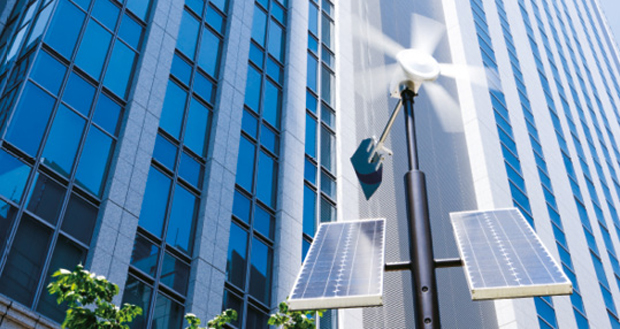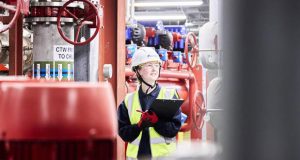 Technologies which enable business-generated power can reduce costs, lower emissions and increase energy security, says Anthony Ainsworth, Chief Operating Officer at npower Business Solutions
Technologies which enable business-generated power can reduce costs, lower emissions and increase energy security, says Anthony Ainsworth, Chief Operating Officer at npower Business Solutions
For more than a year, the UK energy market has experienced a period of unprecedented volatility, with resulting high wholesale prices impacting all businesses. While policymakers have put short-term plans in place to offer some relief from rising energy prices – including the Energy Bill Relief Scheme (EBRS), announced in September 2022 – a longer-term and more sustainable approach is needed to help businesses reduce energy demand and limit their exposure to the global markets.
That said, many businesses are already taking control of their own energy future by investing in sustainable on-site generation. In fact, in our Business Energy Tracker report, which launched in 2022, more than a quarter (27 per cent) of respondents said they were planning to invest in this measure to combat energy risk.
It’s easy to see why, not only does it provide businesses with a route to lower energy costs, increased self-sufficiency and reduced dependency on the grid, it also helps reduce emissions.
But, looking beyond this, it could also enable them to play a crucial role in decarbonising the UK’s energy system by reducing our dependence on imported natural gas, resulting in lower costs and greater energy security.
How? This is something our report – The Future of Energy: The critical role of business in a zero-carbon world – investigated.
TOWARDS A BUSINESS-POWERED FUTURE?
The report uses new modelling to assess whether on-site generation technologies, including wind, solar photovoltaic (PV), battery storage, biogas and biomethane, could feasibly replace the electricity generated from imported natural gas by 2035. It was based on the projection from the Climate Change Committee’s Sixth Carbon Budget that, by that date, the UK would require 16 TWh of power from imported natural gas.
The scenarios explored in the report show that by 2035:
- On-site wind capacity within commercial and industrial facilities could reach between 6 and 29 GW
- Installed roof-top solar PV could account for 6.5 GW
- Biogas power generation could be up to 16 TWh
- Hydrogen and biomethane injection could be close to 33 and 7.5 TWh, respectively
In addition, the report predicted that having more business-generated power will lower energy costs, with the overall levelised cost of electricity for the proposed options ranging between £49 and £261/MWh, lower than the wholesale prices we’ve seen recently. Crucially, it will also support the net zero ambition, with emissions savings of up to 6.7 MtCO2/year.
PLANNING FOR A NET ZERO FUTURE
How can facilities managers take action now towards net zero and a more resilient energy future?
1. Understand your current sustainability status
To help assess the most suitable path to net zero for your organisation, it is important to have insight on how you are currently using energy and what impact your efficiency and sustainability projects are already having. That way, you can understand the best measures for the future, so you can plan an effective and sustainable energy strategy. Tools such as our new Net Zero Calculator – an easy-to-use interactive tool – can help your business develop a holistic net zero programme that delivers real and lasting benefits.
2. Build the case
During the current environment, building the commercial case for any kind of net zero investment such as on-site generation can be challenging. Therefore, it is important to clearly demonstrate the benefits it will bring, for example:
- Reduction in carbon emissions: On-site generation technologies that use 100 per cent renewable sources – such as solar PV or wind – will help a business significantly reduce its carbon footprint.
- Lower energy costs: Installing on-site generation technology can make a real impact on the bottom line through a reduction in energy costs, as a site will only generate the energy the business needs to use, naturally operating in a more efficient way.
- Greater control: Having an on-site supply helps to protect businesses against wholesale price volatility, meaning you can plan ahead with greater certainty.
- Improved reputation: Installing on-site generation is a clear signal that your business is serious about sustainability, particularly in the eyes of customers and throughout your supply chain.
3. Take action
Working with an energy partner can help you assess the best options for your business, from making the move to renewable supply to exploring the benefits of sustainable on-site generation, battery storage and electric fleets.
UNLOCKING THE POWER POTENTIAL OF BUSINESS
What the Future of Energy report shows is that businesses really do have the power to shape our energy future. However, achieving this requires policy and incentives to support it, such as tax deduction for equipment purchases, which could further encourage businesses’ involvement in energy production.
However, what we wanted to demonstrate was the potential. And, we believe that this modelling provides a compelling case for policymakers to encourage more businesses to be part of the 2035 zero-carbon system and contribute to the national agenda of energy independence and net zero – both now and in the future.
The Future of Energy: The critical role of business in a zero-carbon world, can be downloaded here.





